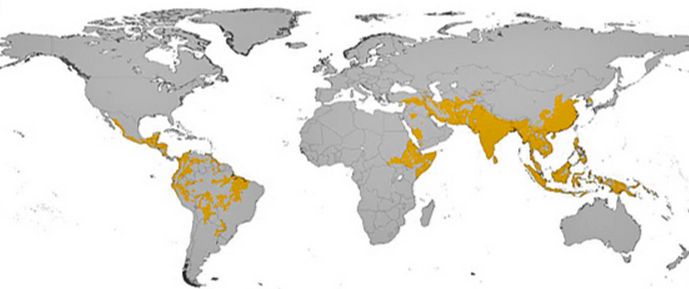
Since we often discuss
inpatient issues during morning report and noon rounds, let's focus on an
outpatient issue instead. Hypertension (HTN) is extremely common (20% of
Canadians over the age of 18) and is a signifcant risk factor for
end-organ dysfunction. The inpatient management of hypertension is
very different from the outpatient management of hypertension. The information
below is from the CHEP Guidelines, a Canadian hypertension guideline.
Diagnosis
High blood pressure is
defined by a BP >140/90. The flow chart for the diagnosis of
HTN can be complication, but basically the diagnosis is often made over the
course of 3 ambulatory clinic visits. HTN is defined by a BP greater than
140/90.
The next step is to use
either clinic BP monitoring (BPM), ambulatory monitoring (ABPM), or
home monitoring. If using clinic BPM, a BP greater than 140/90 in three
subsequent visits clinches the diagnosis, or a BP greater than 160/100 in any
of those three diagnosis. For ABPM and Home BPM, a consistent BP of
greater than 135/85 makes the diagnosis.
Beware of two entities:
1. White Coat HTN:
BP greater than 140 in the clinic but less than 135 via ABPM (should
not treat as HTN).
2. Masked HTN: BP
greater than 135 on APM but less than 140 in the clinic (should treat as HTN).
Investigations
Should be done for all
patients with newly diagnosed HTN.
1. Urinalysis
2 .Blood chemistry
(potassium, sodium and creatinine)
3.
Fasting glucose and/or glycated hemoglobin (A1c)
4. Fasting total
cholesterol and high density lipoprotein cholesterol (HDL), low density
lipoprotein cholesterol (LDL), triglycerides.
5. Standard 12-leads ECG
Treatment
1) Non-Pharmacological
o Physical Exercise
– Should be recommended 30-60 minutes of moderate intensity exercise
(walking, jogging, cycling, or swimming) x4-7/week
o Weight
loss - BMI should be 18.5 to 24.9 kg/m²
o Alcohol
Consumption - less than 2 drinks per day, no more
than 14 drinks/week for men and 9/week for women
o Salt
Intake – Restrict to 2,000 mg (5g of salt or 87mmol of sodium) per day
o Stress -
Keep it down! Don't make me
come over there.
2) Pharmacological
The first step is to
remove agents that can induce/aggravate HTN (NSAIDs, steroids, OCP, EPO, MAOIs,
SSRIs). Next, decide on a target for BP, which are listed below:
Next, select an anti-HTN
agent. Important considerations for choosing HTN treatment:
- Use caution when initiating therapy with 2 drugs in
whom adverse events are more likely (e.g. frail elderly, those with
postural hypotension or who are dehydrated).
- If a
diuretic is not used as first or second line therapy, triple therapy
should include a diuretic, when not contraindicated.
- ACE inhibitors, renin inhibitors, and ARBs are
contraindicated in pregnancy
- Don’t use an ACE inhibitor and an ARB together, except
only in people with advanced heart failure or proteinuric nephropathy.
This combination does not reduce cardiovascular events more than the ACEI
alone and have more adverse effects.
- Two
drug combinations of beta blockers, ACE inhibitors, and angiotensin
receptor blockers have not been proven to have additive hypotensive
effects. Therefore, use if together only if non-blood pressure lowering
indication.
- ACE-inhibitors are not recommended (as monotherapy) for
black patients without another compelling indication.
Here is the treatment
algorithm for systolic/diasltolic HTN. Note that the algorithm is similar for
Isolated Systolic HTN, except beta blockers and ACE inhibitors are not
considered first line.
Phewf. That was a
lot of stuff.
Why a picture of Wonder
Woman at the top? Turns out, the same person who created Wonder Woman also
invented the polygraph test. Hence the 'lasso of truth.' Doesn't have much to
do with hypertension, except that liars have higher blood pressure....probably.
An excellent resource is
https://www.hypertension.ca/en/chep. There, you can find all the
guidelines for HTN diagnosis and treatment.











